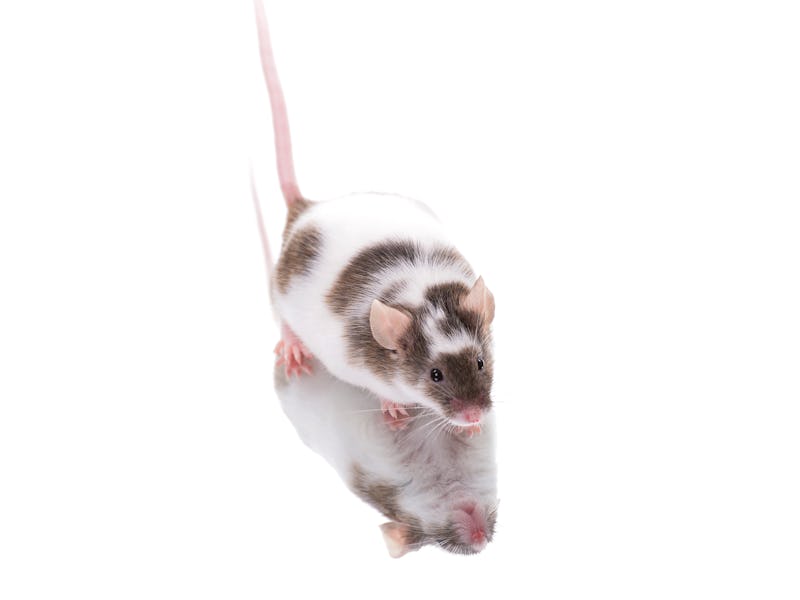Mice Pass an Intelligence Test Reserved for Human Development
I self-recognize, therefore, I am.

Look in the mirror, and what do you see? You, of course. That answer isn’t as straightforward for all mammals. For decades, scientists have used a psychological milestone called the “Mirror Test” to gauge an animal’s capability for visual self-recognition. Now, the test has a new graduate — the humble mouse.
The ability for mice to recognize their reflection arises from a subgroup of neurons, according to a new study published today in the journal Neuron by researchers at the University of Texas Southwestern Medical Center, but the mouse’s passing grade comes with a few caveats.
To set up the experiment, the team blotted black or white ink on black mice's foreheads to create a stain. Additionally, some mice in the study were accustomed to mirrors, while others encountered them for the first time.
The scientists found that white-inked mice spent more time grooming their faces in front of the mirror, indicating that they recognized themselves in the mirror and tried to clean the stain. Conversely, mice that received black ink (the same color as their fur) didn’t engage in the same behavior, suggesting they didn’t notice the stain. Researchers also noticed that mice who grew up with mirrors were more likely to recognize themselves compared to those inexperienced with such reflective surfaces. Even if the drop of white ink was too small, the mice didn’t clean it.
To understand this rodent recognition, the team used gene expression mapping to identify ventral hippocampal CA1 neurons as integral to passing the Mirror Test. When they inhibited these neurons from firing, the mice stopped grooming the white ink blot from their faces. A subgroup of these neurons also activated when these mice saw others of the same fur color, indicating that they could identify groups that are similar to them. These neurons didn’t activate when the mice observed another mouse with white fur.
While this test incorporates both visual and tactile stimuli from both the mirror and the feeling of an inkblot, the researchers want to investigate these sensations separately. They’re also interested in whether a mouse can detect a change in its appearance with facial filters.
But with the help of this newly minted mental mouse model, the team will continue investigating the complex dance of neural activity that fires when mammals unexpectedly see themselves staring back at them.